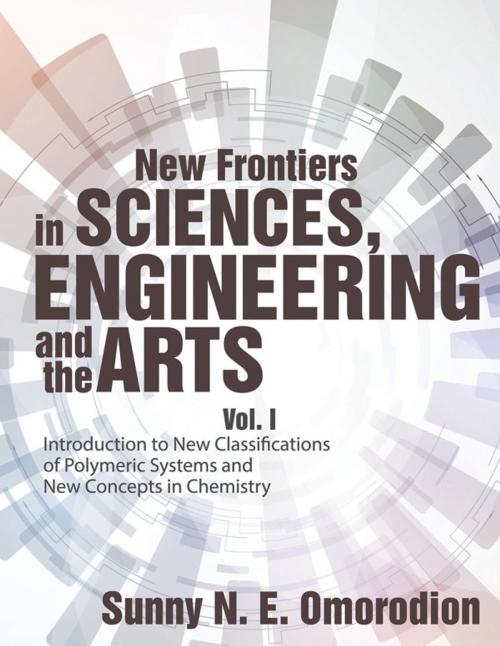New Frontiers in Sciences, Engineering and the Arts
Vol. I Introduction to New Classifications of Polymeric Systems and New Concepts in Chemistry
Nonfiction, Science & Nature, Science| Author: | Sunny N. E. Omorodion | ISBN: | 9781524679125 |
| Publisher: | AuthorHouse UK | Publication: | April 27, 2017 |
| Imprint: | AuthorHouse UK | Language: | English |
| Author: | Sunny N. E. Omorodion |
| ISBN: | 9781524679125 |
| Publisher: | AuthorHouse UK |
| Publication: | April 27, 2017 |
| Imprint: | AuthorHouse UK |
| Language: | English |
Introduction to New Classifications of Polymeric Systems and New Concepts in Chemistry is the first volume of New Frontiers in Sciences, Engineering and the Arts. It is the first, because of the importance of polymers in our lives and world. With life, steroids, DNAs RNAs, enzymes, most of the food we eat, and more are polymeric in character. Without the polymer industry, the largest industry in the whole worldelectrical and electronic industries, Automobiles industries, kitchen and household industries, packaging industries, oil and gas industries, sound and current industries, and more too countless to listcannot exist both in our physical and natural world, a complex world. The greatest subject area in chemistry is polymer chemistry; for without it, one would not have been able to see what the atom is. It was only in recent years that some great scientists began to see that the electron does not exist outside the nucleus of an atom, but probably inside the nucleus. Indeed, where they exist is still unknown to them. What indeed are outside the nucleus are what some great scientists sometimes call radicals. What these radicals are have remained unknown to humanity. For example, how can radicals add during free-radical or radical polymerizations when they have not been identified just like the ions and charges have with, for example, their males and females. One was able to ask this very deep question based on ones background in polymer chemistry at secondary, bachelors, masters, and PhD levels. Otherwise, others can. Finding solutions to it led to the New Frontiers using universal data abundantly available. With this newly added definition for an atom, one discovered that what all scientists, engineers, medical doctors, and experts in all disciplines have been doing have all been based on the use of universal data, 95 percent of which have wrong interpretationsa complete world of illusions. Is it not shocking to note that all chemists, whether polymeric or not, do not know what a monomer or compound is, or how chemical and polymeric reactions take place. Is it not shocking to note that the electrical and electronic engineers do not know how current and sound flows in some metals and liquids and in space. These and so much more are the origins of the New Frontiers, beginning with this first volume wherein new concepts seen in the first book, The Beginning of a New Dawn for Humanity emerged from.
Introduction to New Classifications of Polymeric Systems and New Concepts in Chemistry is the first volume of New Frontiers in Sciences, Engineering and the Arts. It is the first, because of the importance of polymers in our lives and world. With life, steroids, DNAs RNAs, enzymes, most of the food we eat, and more are polymeric in character. Without the polymer industry, the largest industry in the whole worldelectrical and electronic industries, Automobiles industries, kitchen and household industries, packaging industries, oil and gas industries, sound and current industries, and more too countless to listcannot exist both in our physical and natural world, a complex world. The greatest subject area in chemistry is polymer chemistry; for without it, one would not have been able to see what the atom is. It was only in recent years that some great scientists began to see that the electron does not exist outside the nucleus of an atom, but probably inside the nucleus. Indeed, where they exist is still unknown to them. What indeed are outside the nucleus are what some great scientists sometimes call radicals. What these radicals are have remained unknown to humanity. For example, how can radicals add during free-radical or radical polymerizations when they have not been identified just like the ions and charges have with, for example, their males and females. One was able to ask this very deep question based on ones background in polymer chemistry at secondary, bachelors, masters, and PhD levels. Otherwise, others can. Finding solutions to it led to the New Frontiers using universal data abundantly available. With this newly added definition for an atom, one discovered that what all scientists, engineers, medical doctors, and experts in all disciplines have been doing have all been based on the use of universal data, 95 percent of which have wrong interpretationsa complete world of illusions. Is it not shocking to note that all chemists, whether polymeric or not, do not know what a monomer or compound is, or how chemical and polymeric reactions take place. Is it not shocking to note that the electrical and electronic engineers do not know how current and sound flows in some metals and liquids and in space. These and so much more are the origins of the New Frontiers, beginning with this first volume wherein new concepts seen in the first book, The Beginning of a New Dawn for Humanity emerged from.















